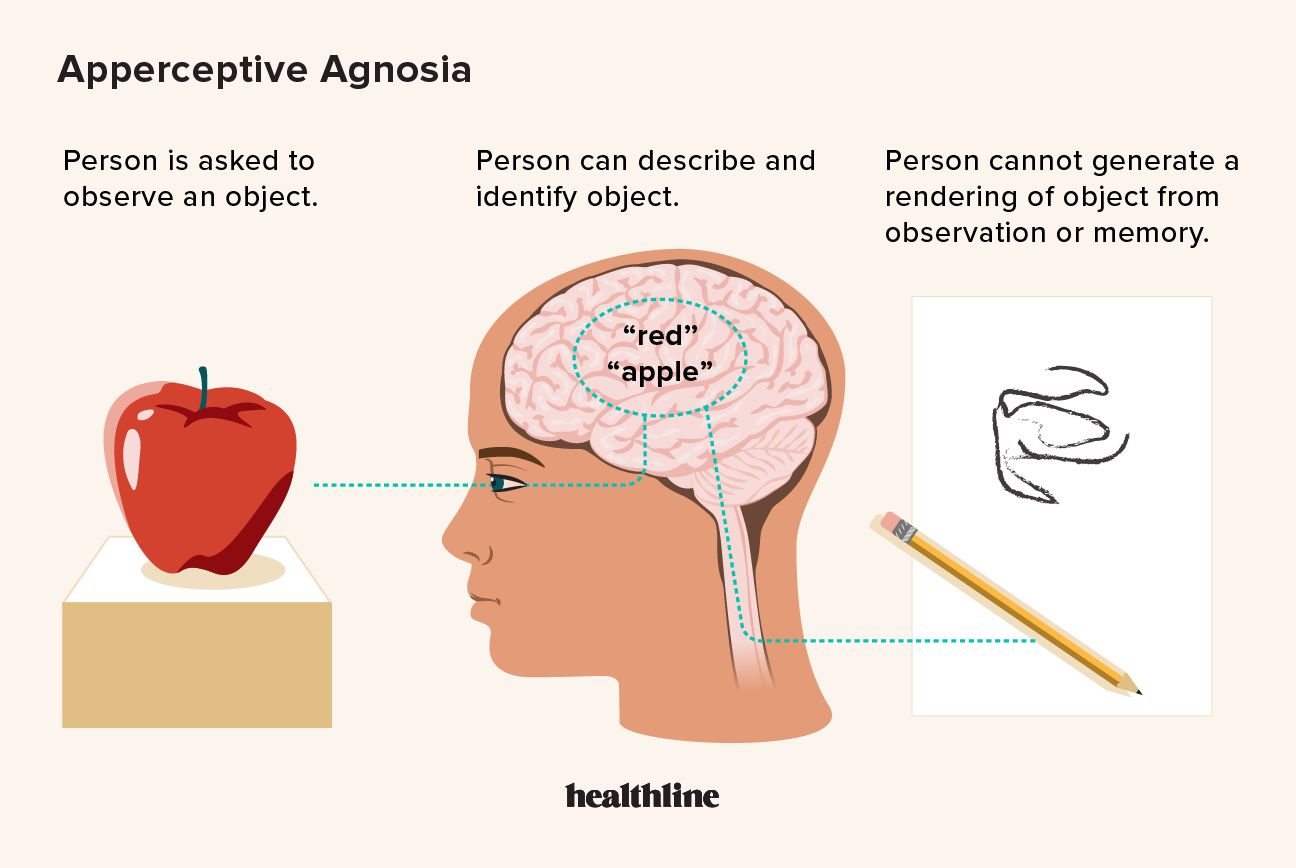Apperceptive agnosia is a rare condition in which you have trouble recognizing objects even though you have typical vision. If you have this condition, you may not be able to identify or accurately copy letters and shapes.
Agnosia — the loss of the ability to identify objects, people, or voices — affects fewer than
There are a few types of agnosia. If you have apperceptive agnosia, you’ll have trouble perceiving the shape or form of objects but will still be able to recall what the objects are and how they’re used.
Apperceptive visual agnosia is not likely to significantly affect your ability to see and navigate your environment. You should be able to pick up and move objects without difficulty.
With apperceptive agnosia, you may not be able to:
- draw or copy a figure
- recognize letters or shapes
- match objects
- notice when objects are oriented differently
You’ll still typically be able to recall what an object is called and how it’s used. But you may have trouble reading and writing due to challenges with recognizing the letters in words.

Apperceptive agnosia is often associated with lesions in the
Agnosia may result from:
- stroke
- traumatic brain injury
- tumors
- brain surgery
- seizures
- hemorrhages
- viruses that affect your brain and nervous system
- brain damage due to a lack of oxygen (cerebral hypoxia)
- exposure to toxins (e.g., carbon monoxide poisoning)
- neurodevelopmental disorders
Certain
To test for apperceptive agnosia, a doctor may ask you to draw or copy pictures of objects. (When someone with apperceptive agnosia is asked to copy a picture or a shape, it may come out as a series of scribbles.) They might also ask you to recognize letters and shapes.
In addition to psychological testing, doctors may perform eye testing to rule out other vision problems.
If you receive a diagnosis of apperceptive agnosia, your doctor will likely order scans of your brain to find out the type and extent of any brain and nerve damage.
There is often no straightforward cure for apperceptive agnosia. In many cases, people have this condition for the rest of their lives.
Treatment for apperceptive agnosia will typically focus on addressing the symptoms you’re experiencing. Doctors may suggest different types of therapy to help compensate for any affected skills.
Therapy can help you learn alternative tactile and auditory ways of recognizing objects. Your doctor might also suggest technology to help with specific daily challenges, such as screen reading technology and voice-to-text software.
Additionally, it’s important to address any related neurological issues or other health issues your doctor may discover. For example, surgery may be necessary to remove a tumor that’s affecting your brain function. In some cases, treating underlying health issues may help cure or lessen agnosia.
Apperceptive agnosia affects your ability to perceive the shape or form of objects. If you have this condition, you might not be able to draw, match, or copy objects but can typically recall what objects are called and how they’re used.
If you think you might have agnosia, it’s important to talk with a doctor. If you receive a diagnosis of agnosia, your doctor may recommend testing to find out the extent of any damage to your brain or nerves.
